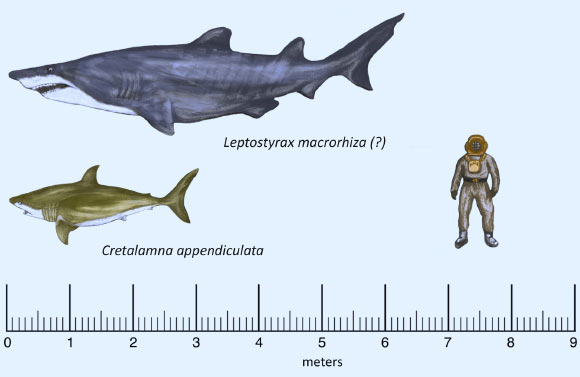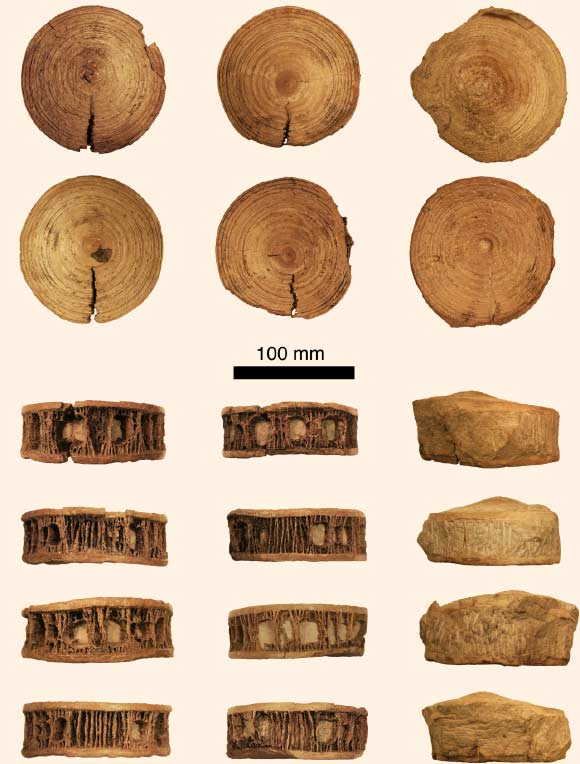Three large vertebrae, believed to be that of an ancient, gigantic shark, have been discovered in Texas by members of the Paleontology Club of the University of Wisconsin-Milwaukee.

Reconstruction of the lamniform shark Cretalamna appendiculata and the shark described by Dr Frederickson and his colleagues. Image credit: Frederickson JA et al.
The shark fossils were recovered in 2013 from the Lower Cretaceous Duck Creek Formation of Tarrant County, north-central Texas. They then were analyzed by a team of paleontologists led by Dr Joseph Frederickson from the University of Oklahoma, Norman.
“These vertebrae represent a single animal of approximately 6.3 m (20 feet 8 inches) in minimum total length, making this individual one of the largest documented sharks from the Early Cretaceous of North America,” Dr Frederickson and his colleagues wrote in a paper published in the journal PLoS ONE.
The scientists hypothesize that these fossils belong to the prehistoric lamniform shark Leptostyrax macrorhiza (lived between 145 and 100 million years ago) based on their size and co-occurrence in two typical localities.

The three newly-discovered shark vertebrae in (descending order) rostral, caudal, ventral, right lateral, dorsal, and left lateral views. Image credit: Frederickson JA et al.
“However, without associated teeth, this identification cannot be confirmed,” they wrote.
“This specimen has unique morphology undocumented in any other Cretaceous shark from North America, but shares large size with a contemporaneous vertebra from the Kiowa Shale of Kansas.”
_____
Frederickson JA et al. 2015. A Gigantic Shark from the Lower Cretaceous Duck Creek Formation of Texas. PLoS ONE 10 (6): e0127162; doi: 10.1371/journal.pone.0127162







